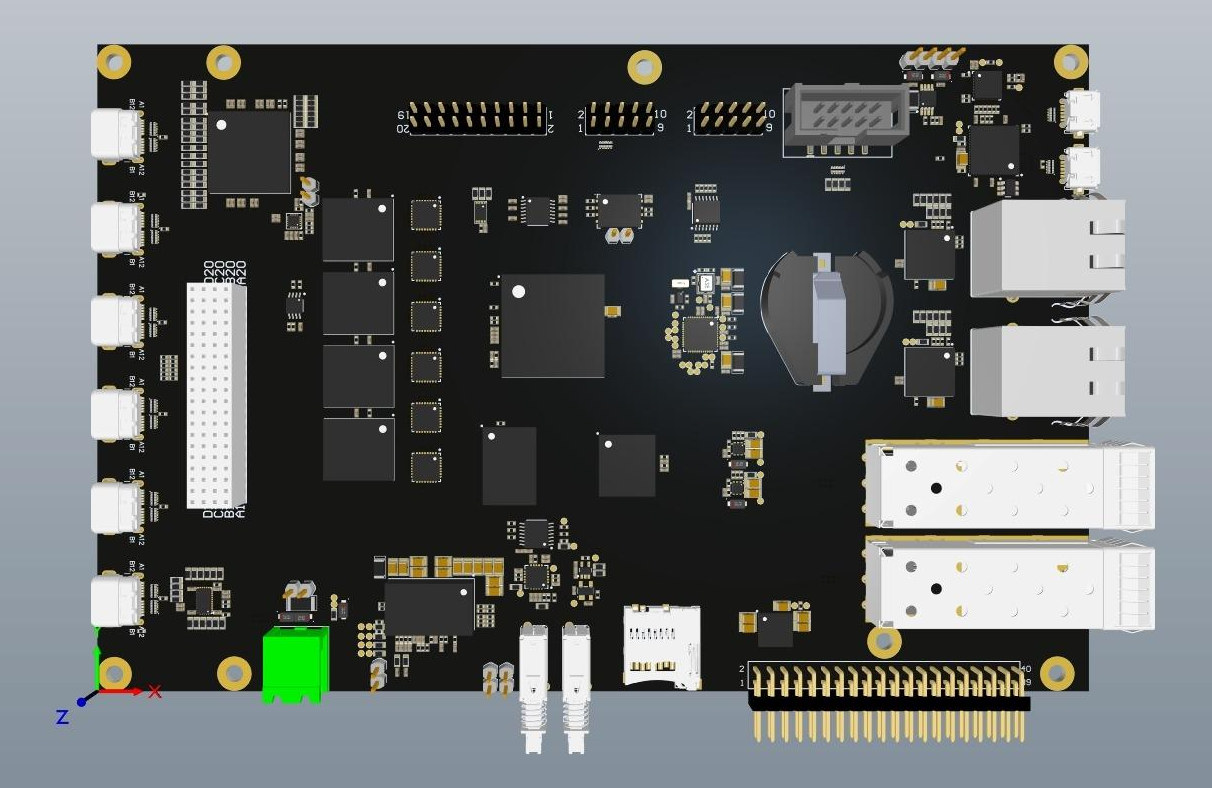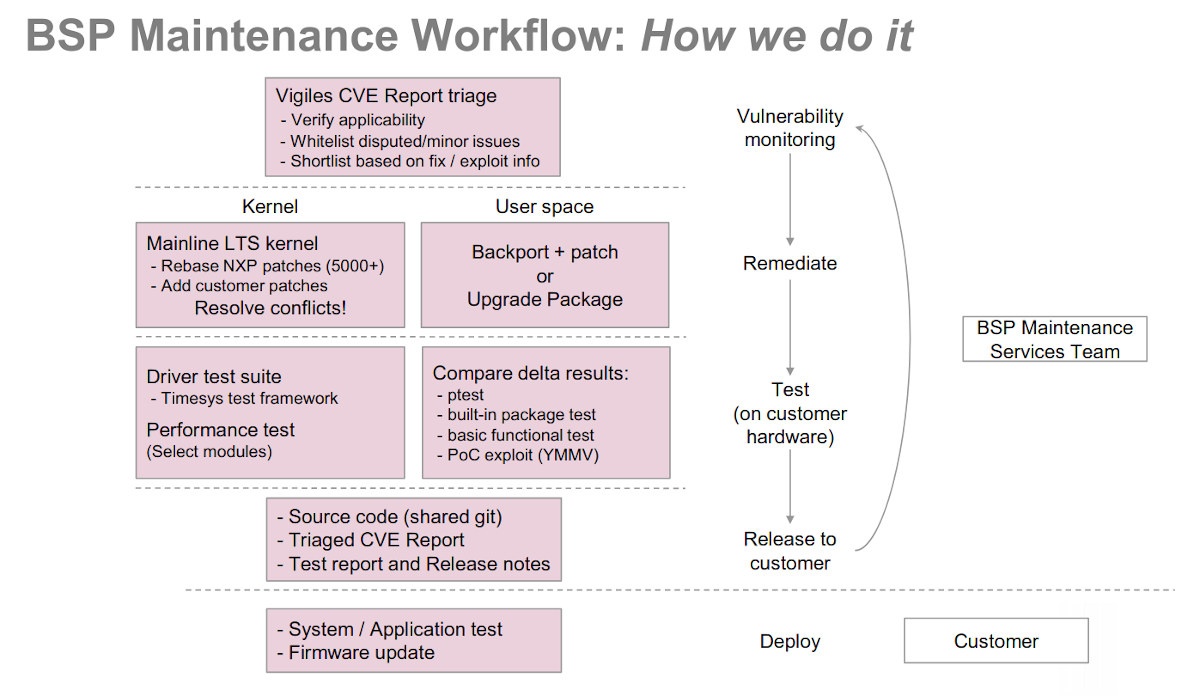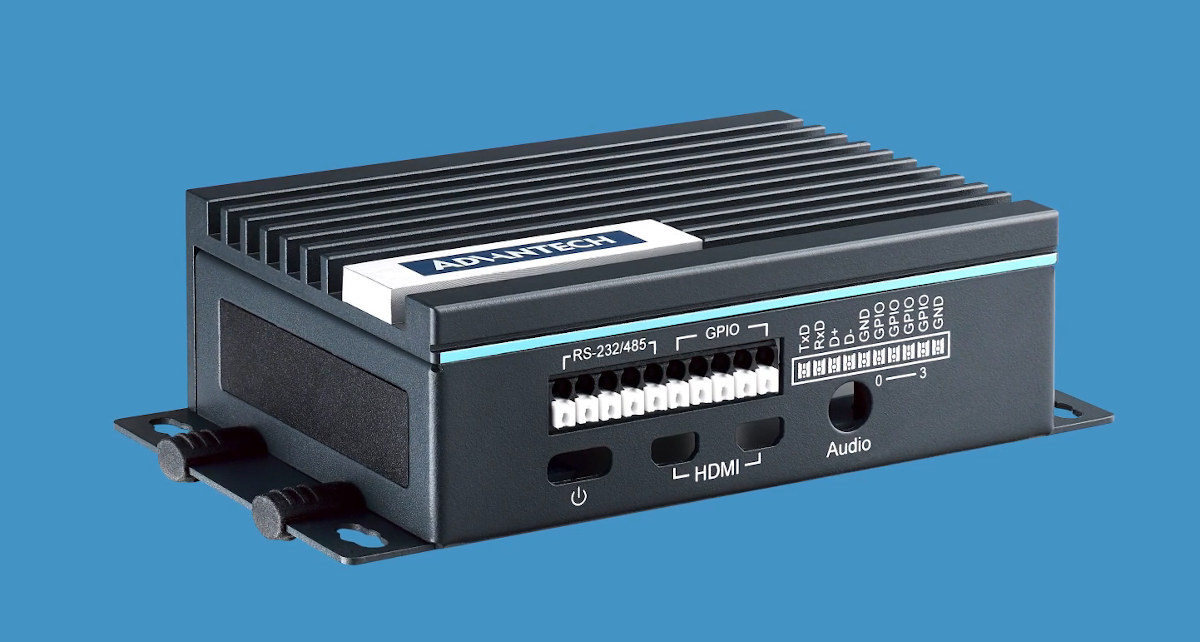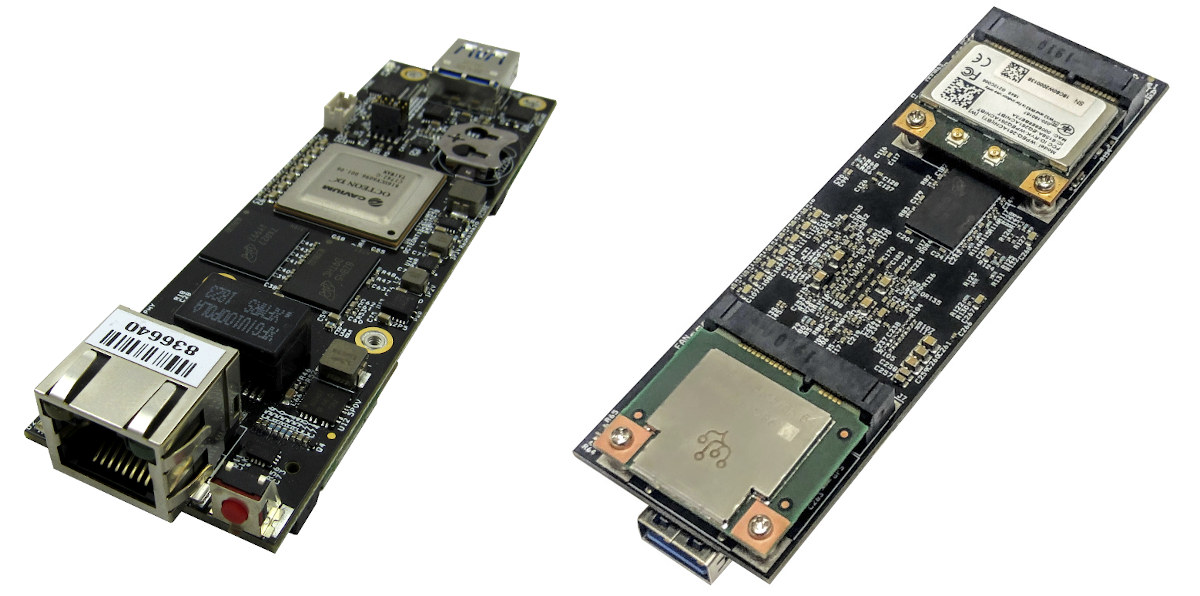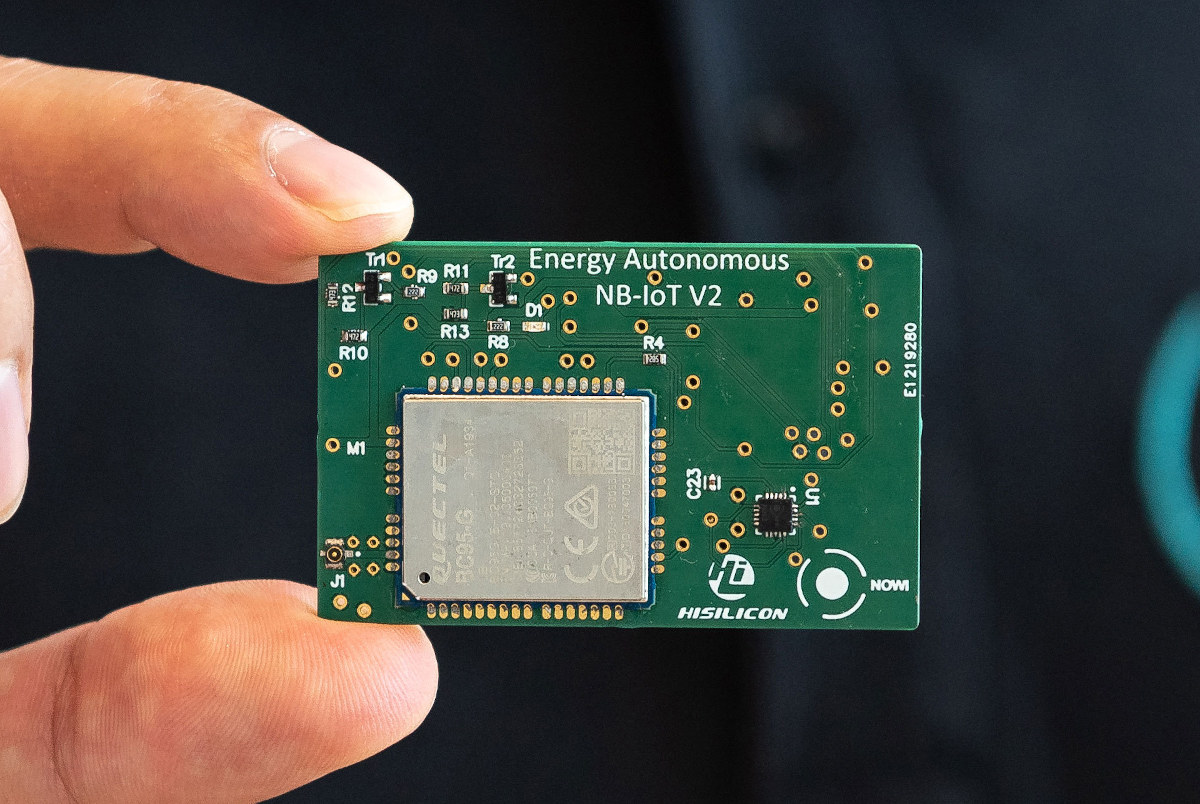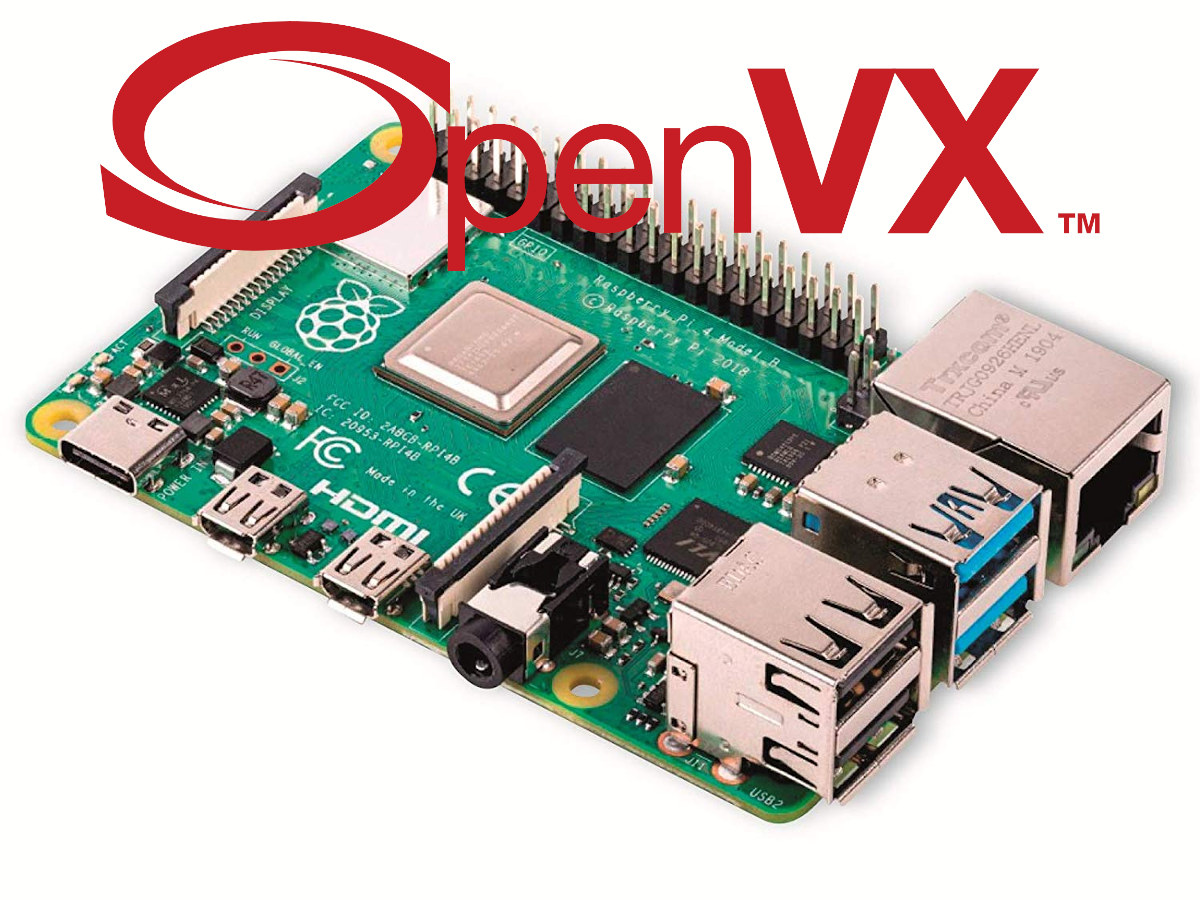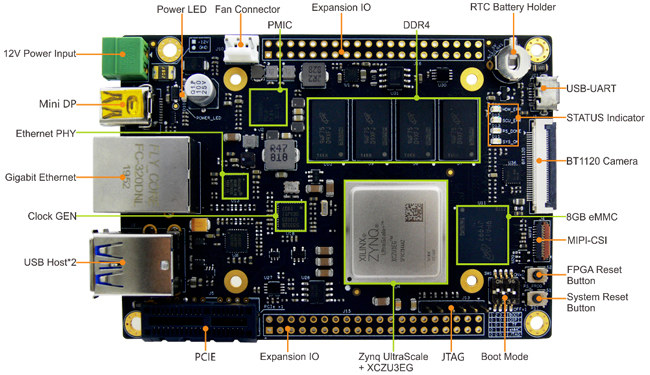RISC-V based PolarFire SoC FPGA by Microsemi may be coming up in the third quarter of this year, but Ali Uzel has been sharing a few details about SAVVY-V advanced open-source RISC-V cluster board made by FOSOH-V (Flexible Open SOurce Hardware for RISC-V) community of developers. It’s powered by Microsemi Polarfire RISC-V SoC MPFS250T with four 64-bit RISC-V cores, a smaller RV64IMAC monitor core, and FPGA fabric that allows 10GbE via SFP+ cages, and exposes six USB Type-C ports. The solution is called a cluster board since up to six SAVVY-V boards can be stacked via a PC/104+ connector and interfaced via the USB-C ports. SAVVY-V cluster board preliminary features and specifications: SoC – Microsemi Polarfire RISC-V SoC MPFS250T with a quad-core 64-bit RV64IMAFDC (RV64GC) processor @ up to 667 MHz, a RV64IMAC monitor core, and FPGA fabric with 250K logic elements; 3.0 CoreMarks/MHz, 2.0 DMIPs/MHz; Also compatible with MPFS160T, […]
Interview – NXP Linux BSP and Timesys Vigiles Maintenance Service & Security Updates
I’ve been interviewing Ed White, Manager of NXP’s Professional Support and Engineering Services, and Akshay Bhat, Director of Engineering, Security Solutions at Timesys by email to find out more about NXP Linux BSP development process, and how Timesys can help to keep it updated and secure with its Vigiles service. Q1. CNX Software readers recently discussed NXP Linux BSP update status. One person specifically noted Linux 4.14.98 used in the BSP was well over a year old, and there were various opinions about the topic, including one person suggesting NXP only provides a stable BSP and it was the ultimate responsibility of the customer to merge Linux security patchsets. Could you explain the typical development process for NXP Linux BSP, and why the company chose not to update the patchsets regularly? Answer: The kernel strategy for NXP’s i.MX family BSPs closely follows the annual cadence of kernel.org’s LTS kernel selection. […]
New Tech Vocabulary for 2020 Could Break Software Compatibility
2020 has been an interesting year with plenty of disruption to most people lives, and political changes. Now it appears some of those changes will affect technology, and by that, I mean things like changes to datasheets and even source code. I’ve been seen a lot of talks about slave/master terminology on Twitter, blogs, and CNET is now reporting Twitter Engineer will remove racially charged technical terms from the source code and interface. Whether you are a veteran or just graduated last year, you may have to learn a new set of vocabulary to understand datasheets and code. Twitter’s senior management is allegedly backing the effort for the changes. This goes beyond racially charged terms, but if it’s the world we’re going to live in so be it. Some changes in the datasheet may not be a big issue, except for the initial confusion, but it may become problematic when […]
Advantech UNO-220 is an Industrial RS232/RS485 Gateway Kit for Raspberry Pi 4
While Raspberry Pi SBCs are mostly designed for the education market, they find their way in various devices, even in the industrial market with products such as ModBerry M500 industrial computer, Compulab IOT-GATE-RPi industrial IoT computer, BB-400 Neuron Edge industrial controller, and many others. All those offer RS-232 and RS-485 ports besides other interfaces typically found in industrial applications like isolated inputs, CAN buses, and more. There’s now yet another option with Advantech UNO-200 industrial gateway kit for Raspberry Pi 4 board with RS232/RS485 header and RTC battery. Advantech UNO-220 specifications: Compatible SBC – Raspberry Pi 4 Model B with dual micro HDMI outputs, audio jack, as well as USB and Ethernet ports accessible through the enclosure I/O Interfaces GPIO – Input (GPI) 0-3: VIH: 2~5V VIL: 0 ~ 0.8V; Output (GPO) 0-3: 0 ~ 5V Serial Ports – 5-pin terminal block for RS232/485, automatic direction control, 300 ~ 115.2kbps […]
Using Google Coral mPCIe Card into a Compact Marvell Octeon TX Linux SBC
Google launched Coral mPCIe and M.2 cards at the very beginning of the year. The cards integrate the company’s 4 TOPS Edge TPU used for low power edge AI applications to bring the solutions to boards with mPCIe or M.2 sockets. Those are just hardware sockets that are optionally connected to USB, PCIe, I2C, etc… so you have to make sure the socket on your board exposes PCIe Gen2 x1. If you worry about compatibility, it’s good to get a board that’s known to work, and one of those is Gateworks Newport GW6903 SBC that offers two mPCIe sockets and features Marvell Octeon TX dual or quad-core Armv8 processor coupled with up to 4GB RAM. Besides the mini PCIe Coral card and Newport SBC, you’ll also need a Linux host and optionally a USB webcam for inference. The rest of the instructions are explained in the Wiki with the following […]
Energy Harvesting Makes Energy Autonomous NB-IoT V2 Platform Maintenance Free
LPWAN wireless protocols like LoRaWAN, Sigfox, and NB-IoT enable long-range transfers of small amounts of data at very low power for a battery life of up to 10 years. But there’s still a need to replace the battery from time to time increasing maintenance costs. HiSilicon and Nowi have partnered to design and launch the Energy Autonomous NB-IoT V2 Platform, a sensor hub that can transmit via NB-IoT without the need to change or recharge batteries manually through its energy harvesting capabilities. Energy Autonomous NB-IoT V2 Platform key features and specifications: LPWAN module – Quectel BC95 module based on HiSilicon Hi2115 NB-IoT chip Max transmissions per day Up to 3 transmissions per day in indoor conditions Up to 6 transmissions per day in outdoor conditions Power Management Nowi NH2 (MH2D02564) energy harvesting power management IC Can operate with a range of photovoltaic (multiple) cells Dimensions – 5.5 x 3.5cm The […]
Raspberry Pi SBC Now Supports OpenVX 1.3 Computer Vision API
OpenVX is an open, royalty-free API standard for cross-platform acceleration of computer vision applications developed by The Khronos Group that also manages the popular OpenGL ES, Vulkan, and OpenCL standards. After OpenGL ES 3.1 conformance for Raspberry Pi 4, and good progress on the Vulkan implementation, the Raspberry Pi Foundation has now announced that both Raspberry Pi 3 and 4 Model B SBC’s had achieved OpenVX 1.3 conformance (somehow dated 2020-07-23). Raspberry Pi OpenVX open-source sample implementation passes the Vision, Enhanced Vision, & Neural Net conformance profiles specified in OpenVX 1.3 standard. However, it is NOT intended to be a reference implementation, as it is not optimized, production-ready, nor actively maintained by Khronos publically. The sample can be built on multiple operating systems (Windows, Linux, Android) using either CMake or Concerto. Detailed instructions are provided for Ubuntu 18.04 64-bit x86 and Raspberry Pi SBC. Here’s the list of commands to […]
Zynq UltraScale+ Arm FPGA FZ3 Deep Learning Accelerator Card Supports Baidu Brain AI Tools
MYIR’s FZ3 card is a deep learning accelerator board powered by Xilinx Zynq UltraScale+ ZU3EG Arm FPGA MPSoC delivering up to 1.2TOPS for artificial intelligence products based on Baidu Brain AI open platform. The FZ3 card also features 4GB RAM, 8GB eMMC flash, USB 2.0 & USB 3.0 ports, Gigabit Ethernet, DisplayPort (DP) output, PCIe interface, MIPI-CSI and more. MYIR FZ3 card specifications: SoC – Xilinx Zynq UltraScale+ XCZU3EG-1SFVC784E (ZU3EG) MPSoC Quad-core Arm Cortex-A53 @ 1.2 GHz Dual-core Arm Cortex-R5 processor @ 600MHz Arm Mali-400MP2 GPU FPGA fabric System Memory – 4GB DDR4 Storage – 8GB eMMC flash, 32MB QSPI flash, 32KB EEPROM, MicroSD card slot Video Output – 1x Mini DisplayPort up to 4Kp30 Camera I/F 1 x MIPI-CSI Interface (25-pin 0.3mm pitch FPC connector) 1 x BT1120 Camera Interface (32-pin 0.5mm pitch FPC connector) Connectivity – 1x Gigabit Ethernet USB – 1x USB 2.0 Host, 1x USB 3.0 Host […]


